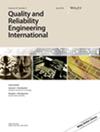风力涡轮机 SCADA 数据的多模式高维时间序列聚类和监测
IF 2.8
3区 工程技术
Q3 ENGINEERING, INDUSTRIAL
引用次数: 0
摘要
复杂系统的运行过程通常表现为多种截然不同的运行模式。以风力涡轮机为例,其运行模式受自然环境中动态变化的风况影响很大。SCADA 系统在收集风力涡轮机的各种参数、促进区分和模拟不同运行模式方面发挥着至关重要的作用。然而,SCADA 数据中的变量维度过大,使得建模工作既复杂又低效,这是一个挑战。在本研究中,我们利用有关风力涡轮机变量分层结构的工程知识,提出了一种按运行模式对数据进行有效时间聚类的新方法。我们的方法包括首先根据子系统对变量进行聚类,并在每个子系统内实施时间聚类。随后,我们引入一个新颖的图神经网络,从所有子系统中提取并串联特征,从而对整个系统的运行模式进行判别。最后,我们利用这些特征建模,对输出功率进行预测,预测残差可用于监控。在数值实验和实际风力涡轮机数据集上进行的性能评估证明了所提方法的有效性和优越性。本文章由计算机程序翻译,如有差异,请以英文原文为准。
Multimode high‐dimensional time series clustering and monitoring for wind turbine SCADA data
The operating process of complex systems usually manifest in multiple distinct operating modes. In the case of a wind turbine, for example, its operating mode is highly influenced by the wind condition, which changes dynamically in natural environment. The SCADA system plays a crucial role in collecting various parameters from wind turbines, facilitating the differentiation, and modeling of distinct operating modes. However, the challenge lies in the excessive dimensionality of variables in SCADA data, making modeling efforts both intricate and inefficient. In this study, we leverage the engineering knowledge on the hierarchical structure of the variables in wind turbine, and propose a novel method to efficiently cluster the data temporally by operating modes. Our methodology involves initially clustering variables according to subsystems and implementing temporal clustering within each subsystem. Subsequently, we introduce a novel graph neural network to extract and concatenate features from all subsystems, enabling the discrimination of the operational mode of the entire system. Finally, we model these features to make predictions of the output power, and the prediction residual can be used for monitoring. Performance evaluations on both numerical experiments and real‐world wind turbine datasets attest to the effectiveness and superiority of the proposed methods.
求助全文
通过发布文献求助,成功后即可免费获取论文全文。
去求助
来源期刊
CiteScore
4.90
自引率
21.70%
发文量
181
审稿时长
6 months
期刊介绍:
Quality and Reliability Engineering International is a journal devoted to practical engineering aspects of quality and reliability. A refereed technical journal published eight times per year, it covers the development and practical application of existing theoretical methods, research and industrial practices. Articles in the journal will be concerned with case studies, tutorial-type reviews and also with applications of new or well-known theory to the solution of actual quality and reliability problems in engineering.
Papers describing the use of mathematical and statistical tools to solve real life industrial problems are encouraged, provided that the emphasis is placed on practical applications and demonstrated case studies.
The scope of the journal is intended to include components, physics of failure, equipment and systems from the fields of electronic, electrical, mechanical and systems engineering. The areas of communications, aerospace, automotive, railways, shipboard equipment, control engineering and consumer products are all covered by the journal.
Quality and reliability of hardware as well as software are covered. Papers on software engineering and its impact on product quality and reliability are encouraged. The journal will also cover the management of quality and reliability in the engineering industry.
Special issues on a variety of key topics are published every year and contribute to the enhancement of Quality and Reliability Engineering International as a major reference in its field.

 求助内容:
求助内容: 应助结果提醒方式:
应助结果提醒方式:


